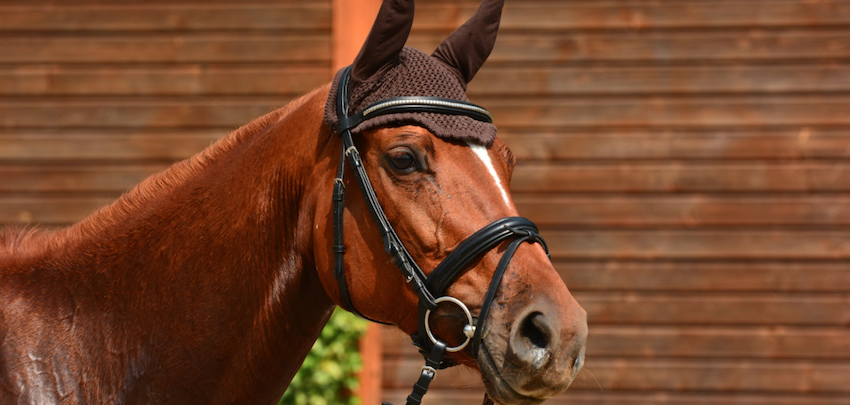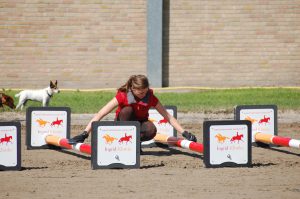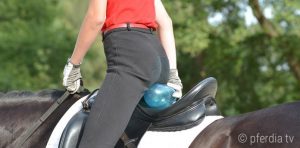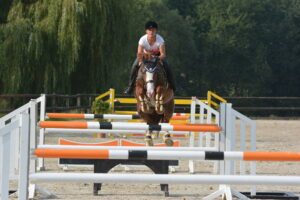Choosing the right tack for your horse is just as important as a regular dentist and farrier checkups because a non-fitting saddle or bridle can cause much damage to the horse. This article gives you a guideline on what to keep in mind when it comes to bridles and how to check for yourself if the bridle fits your horse.
Summary
- What Are Horse Bridles?
- The Different Parts of an English Bridle
- Types of English Bridles
- A Guide on How to Bridle
- Double- Check: When Does a Bride Fit
- Choosing The Right Bridle
What Are Horse Bridles?
The bridle is an essential part of the riding equipment because it holds the bit in the horse’s mouth and transports the signals from the rider’s hands correctly to the horse. This makes the bridle a medium because it mediates the communication between the rider and the horse: The bit, bridle and reins function together to give the rider control over the horse’s head. The bit applies pressure to the horse’s mouth and reinforces the other aids of the rider which are the rider’s legs and the weight distribution. A skilled rider and an experienced horse don’t need the reins and the bit as main means of communication but more as a “contact cable”. If you want to refine your aids, then check out our website for engaging exercises and comprehensive tips from selected trainers.
The Different Parts of an English Bridle
The headpiece (or crownpiece) is the piece of equipment that goes on the horse’s head and behind the horse’s ears. It is attached to the cheek pieces that are connected to the bit and secure its position. This makes the headpiece the central piece of the bridle because it is the main strap that holds the other parts of the bridle in place.
The browband covers the horse’s forehead by being attached below the ears. The brow band prevents the bridle from sliding back towards the horse’s neck. The browbands are the piece of the bridle that can be styled in a very fashionable way with beautiful stones or gems covering the band. Just like the browband in the picture on top!
The throatlatch is a latch that is attached under the horse’s ears and goes under the horse’s throat where it is also fastened. It is very important that the throat latch is not fastened too tightly, so the horse’s breathing is not restricted as soon as it goes on the bit. The main purpose of the throat latch is to prevent the bridle from getting off above the horse’s head, which can happen in case of an accident or if the horse rubs its head on something.
The cheek pieces that were already mentioned, are straps that hold the bit. They can also be adjusted to extend or shorten the length of the straps and thereby of course also the height of the bit in the horse’s mouth.
The noseband is a band that goes around the nose of the horse. Its purpose is to keep the other bridle parts in their position and to prevent the horse from opening his mouth. The noseband can occur in the form of a cavesson or a Hanoverian noseband. The cavesson is placed on the back of the nose and slightly below the cheekbone. The Hanoverian (or also drop noseband) surrounds the horse’s nose at a lower point than the cavesson since it is placed under the bit and goes in the horse’s chin groove. However, it still rests on the nasal bone.
The flash is a thin strap that is attached to the noseband and secured under the horse’s chin. Its purpose is to stabilize the bit in the horse’s mouth and to prevent him from crossing his jaw or putting his tongue over the bit. The flash can’t be used on a drop noseband and sometimes isn’t used at all due to its decreasing popularity among the equestrian community.
The bit goes inside the horse’s mouth and is placed in the interdental place between the horse’s teeth known as the “bars.” Two rings left and right from the bit are also attached and they rest on the outside of the horse’s mouth. There are like thousands of different types of mouthpieces but that’s a topic for another time.
The reins of a bridle are attached to the bit rings and thereby link the rider to the horse. The reins are the rider’s link to the horse and are seen on every bridle.
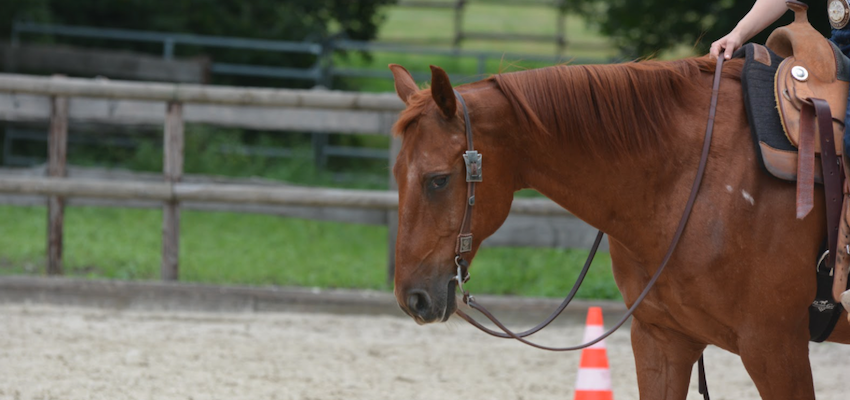
Types of English Bridles
In general, there are two main categories of bridles: The Western bridles and the English bridles. The Western bridles have a different style since they usually don’t have nosebands and browbands. This kind of snaffle is often combined with a Pelham bit or no bit at all due to the little communication with the reins in Western Riding. An example of a bridle without a bit would be the Hackamore where the pressure of the rider’s rein aids is transported to the back of the nose. But we want to focus on types of English Bridles in this chapter:
The English Bridles can occur primarily in a snaffle bridle or double bridle. The snaffle bridle has one bit and one set of reins whereas the double bridle has two different bits and two collections of reins.
Double Bridle (or Full Bridle): The full bridle, as already mentioned, has two bits: A small snaffle, called a bridoon, and a curb bit. That’s why this kind of bridle has two cheek pieces per side. A full bridle also requires two sets of reins– one for each bit. This makes the rein aids sharper and more effective: That’s why the double bridle only belongs in the hands of experienced riders who are riding in an advanced level of dressage. Find more on the topic of dressage on our website and enhance your riding skills.
Snaffle bridle: The typical snaffle bridle is the most common bridle and can be used in most English disciplines like dressage riding, show jumping, eventing and of course when hacking out. The snaffle has only one bit and a cavesson noseband, sometimes with a flash attached to it.
Snaffle with a Figure Eight Noseband: The snaffle with a figure-eight noseband is seen mostly in show jumping, cross country, or polo. The function of the figure-eight noseband is that the mouth is kept closed while the nostrils are allowed to flare and thus the breathing is not restricted at all.
Snaffle with a Drop Noseband: The snaffle bridle with a drop noseband looks just like the basic snaffle bridle with one difference: Instead of the cavesson noseband, the drop noseband is attached to the bridle. The drop noseband is placed lower on the back of the nose and keeps the horse’s mouth closed thus kind of combining the functions of a noseband and a flash.
A Guide on How to Bridle
If you have made it this far, you now know how a bridle looks like, that there are different types of bridles and what the components of it are. Now it’s time to bridle the horse with a basic English snaffle. But how to do it properly?
We start with putting the reins over the horse’s head and holding on to them. Then it’s time to unclip the head collar. It’s important to hang up the head collar, so no one steps- and gets caught in it.
Then the horse’s nose should be held with one hand to prevent it from raising its head.
The bridle should be cleared by putting up the noseband and making sure the buckles are on the outside, so the bit is free. The next step is to sort the bit with the left hand and place it in the horse’s mouth carefully.
If the horse doesn’t want to open its mouth, there is a trick: You can slip your thumb in your horse’s mouth gap (where no teeth are!) to encourage him to open his mouth.
After the bit is placed in the mouth, the rest of the bridle should be lifted and the headpiece goes behind the horse’s ears- Gently! The ears can be flicked through or folded. Now it’s time to move the reins over the neck and to move the forelock to the front and to lift it over the browband. No one would like to have his hair stuck somewhere.
Afterward, it’s time to fasten the latches:
First, the throat latch is fastened. The rule that applies here is that an upright fist should fit between the throat of the horse and the throat latch. Now we move on to the noseband. It should be put underneath both cheek pieces and two fingers should fit between the ridge of the nose and the noseband. The same applies to the flash strap if the bridle has one included.
The horse is finally bridled and we’re almost ready to take off. But before we can ride the horse, it is our duty as riders and owners to check if the equipment actually fits our horse. A bridle that doesn’t fit can cause much harm and pain and of course, we don’t want that to happen.
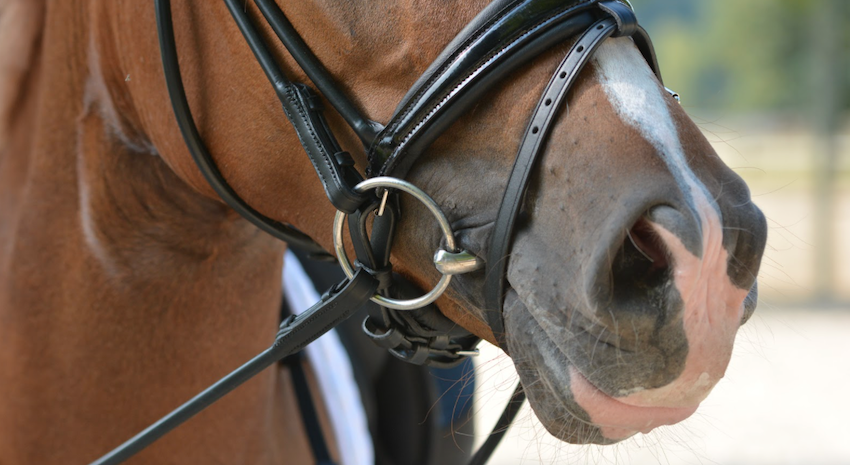
Double- Check: When Does a Bridle Fit?
Fortunately, there are a few rules that can help us equestrians to check for ourselves if the bridle fits the horse. Let’s start from top to bottom, shall we?
First, we take a look at the headpiece. It is important that it isn’t too tight and doesn’t press against the cartilage of the ears or the neck. Then we move on to the browband; it shouldn’t be too short. There should be a certain amount of space between browband and forehead.
Next are the cheekpieces: The horse should be able to move his ears freely and the cheekpieces shouldn’t be pressing against the cartilage of the ear or the lower jaw area. We should make sure there is enough space between bones and leather.
Now we move on to the strap of the noseband. It ought to be long enough for the scope of the horse’s nose and it shouldn’t lie on top of the cheekbones but a bit below. One or two fingers must fit between the cheekbone and noseband.
Next in line is the bit: We must make sure the bit isn’t too wide or too small for the horse’s mouth. If we can pull it out easily on one side, it is too wide. It may stand out 1 cm from the mouth. We also must make sure the lips of the horse don’t get caught between the bit and the ring. And another important aspect: The buckles shall not squeeze into the horse’s soft mouth area.
If we have to do with a drop noseband instead of a cavesson: We should keep in mind that the noseband shouldn’t lie on the cartilage but on the bottom part of the bone and isn’t too tight. Also we must make sure there is enough space between the rings of the bit and the rings of the noseband.
Choosing the Right Bridle
First of all it is important to define, in what kind of discipline the horse is being ridden. If it is a dressage horse, the figure eight snaffle or a western pelham bridle wouldn’t make much sense because (at the latest) in a dressage competition, these kinds of bridles are not allowed. Whereas using an english snaffle with a flash on a cross country- or marathon horse wouldn’t be a good idea. Even if the rider doesn’t participate in competitions, it is recommended to use equipment that is suited for the specific discipline.
If the discipline is defined, it is always a good idea to start with the most basic tack and to go from there. The key when choosing the right bridle is to listen to the horse: With which noseband or bit does he move better, relaxed and most happy? Going down this path will require to try out many different bridle pieces. But finding the right bridle is a very individual thing and there is not a universal bridle that suits every horse: Some like more pressure and some only light contact and then again other horses are very sensitive in the nose area and need extra padding under the noseband. And for horses with mouth problems, the drop noseband is a good alternative to the cavesson.
After assessing the needs of our horse, we also have to ask ourselves; what could suit us? For example: Riders with unsteady hands can do their horse a favor if they use a flash because the strap can secure the bit in the mouth and thus prevent it from moving uncomfortably around due to the bumpy rein aids of the rider. And of course, the aesthetic aspect also comes into play, so a last piece of advice before we come to an end: The conventional wisdom is that a bulkier head looks better in a bulkier bridle and vice versa.

